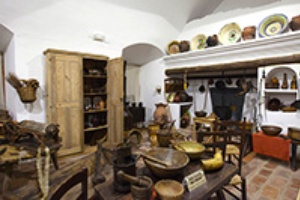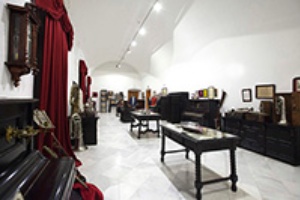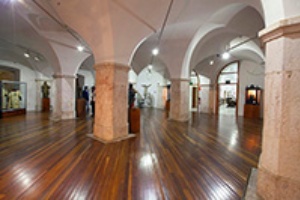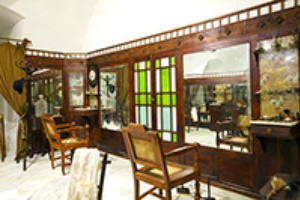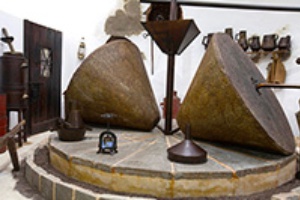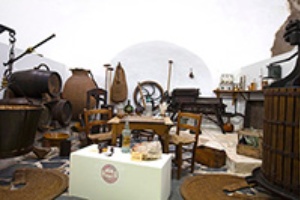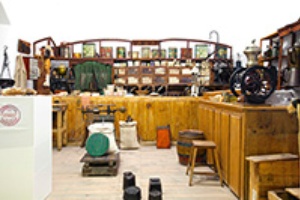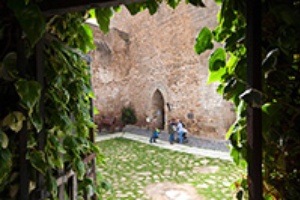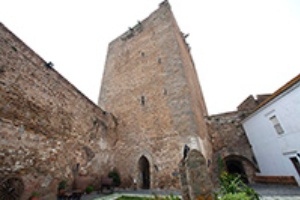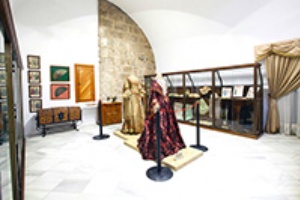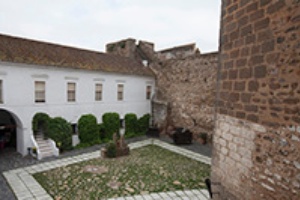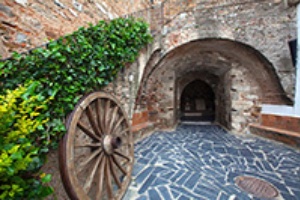Art and culture
Extremadura González Santana Ethnographic Museum
The foundation stone of Olivenza Castle may also be found in this space devoted to traditions and archaeology
- Explore
- González Santana Ethnographic Museum of Extremadura
Scenes of long ago
Location and Contact:
- Tel.:+34 924 49 02 22
- Fax: +34 924 49 02 22
- Email: info@museodeolivenza.com
- Website address: elmuseodeolivenza.com
- Facebook: facebook.com/museodeolivenza
- Twitter: twitter.com/MuseodeOlivenza
- Opening times
Tuesday - Friday: 10.30am to 2pm and 4pm to 7pm (winter) 5pm to 8pm (summer).
Saturday: from 10am to 2.15pm and 4pm to 7pm (winter) 5pm to 8pm (summer).
Sunday: from 10am to 2.15 pm.
Monday: Closed.
- Fee
Normal: € 2.50
Reduced (over 65 years old): € 1.50
Free: children (up to 13 years old)
-
The foundation stone of Olivenza Castle may also be found in this space devoted to traditions and archaeology
The Extremadura González Santana Ethnographic Museum is accommodated in three buildings of great historical and artistic importance. In first place, the solid Keep, commissioned by D. Alfonso I in 1332 built over the old Templar Fortress of Olivenza. In second place, the so-called King's Bakery, an 18th-century building which exemplifies the Portuguese Neo-Classicism promoted by the Marquis of Pombal after the earthquake that devastated Lisbon in 1755. And, in third and last place, the Farming Chamber building, a beautiful specimen of Viennese secessionist architecture from the beginning of 20th century.
Inside the walls, elements donated from two private collections have been on display since 1980, like the ethnographic one, "González Santana" which makes up most of the museum material, and the archaeology one, "Margarita Navarrete". In the collection of ethnographic pieces, you will find items from everyday use, pottery, wine cellars, oil mills, shoemakers, barbers, etc. For its part, the archaeology room holds the remains of different settlements and cultures that have existed in the region of Olivenza. Don't leave without taking a look at the foundation stone of Olivenza Castle, which is to be found in this room.
In the sacred art room you can see the chasubles made of lamé and gold from 17th century, along with the gold and silverware or the polychrome sculptures from 18th century, which belonged to a Franciscan convent that used to be in the town. You can also view two paintings on board from the old main altarpiece in the Church of La Magdalena.
-
- Construction:
-
- Fortress
- Period in history:
-
- Various periods
Accessibility:
- Disabled access
- Accessible elevator
- Access ramps
Services:
- Facilities for Disabled
Theme:
- Art and culture
Gallery:
More suggestions
-
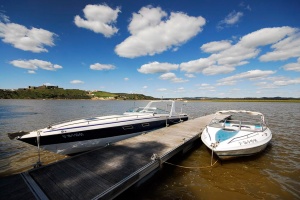
Alqueva nature theme park
Over one thousand experiences shape this innovative and pioneering project based on the attractions of nature.
-
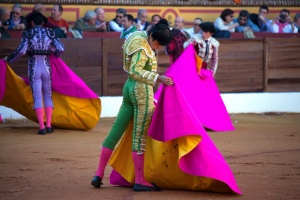
Olivenza Bullfighting Fair
A Festivity of Tourist Interest in Extremadura that signals the opening of the bullfighting season in Spain.
-

Church of Saint Mary Magdalene
The Portuguese Manueline style reaches its peak in Extremadura, with this sixteenth century temple.
-
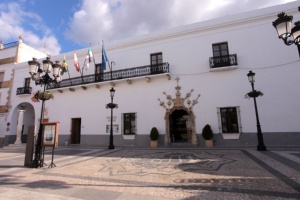
Olivenza — a Templar haven
Claims to the city were a bone of contention between Spain and Portugal on several occasions in the past.


